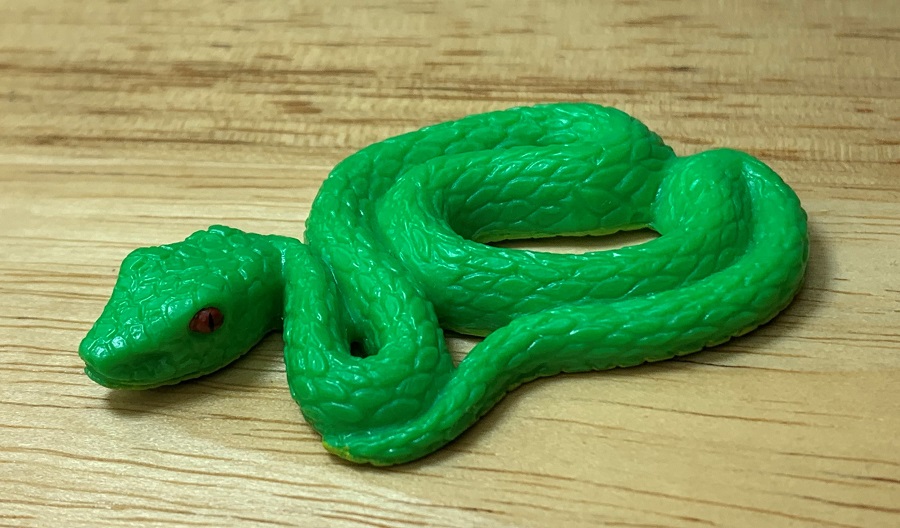The Ruby Snake: An Overview
The term “ruby snake” can refer to a few different species of snakes that share the common trait of having a reddish or ruby-colored appearance. These snakes are often characterized by their vibrant scales that can range from deep red to bright crimson, with some species exhibiting variations in coloration due to environmental factors or genetic diversity. The ruby snake is typically medium-sized, with a length ranging from two to four feet, though some species can grow longer.
Habitat and Distribution
Ruby snakes are found in various parts of the world, with their distribution largely depending on the specific species in question. They are commonly found in regions with warm climates, such as Southeast Asia, parts of Africa, and South America. These snakes prefer habitats that offer both shelter and abundant prey, such as forests, grasslands, and occasionally near human settlements where they can find rodents and other small animals.
One of the key features of the ruby snake’s habitat is its need for cover. These snakes are often found under rocks, within dense vegetation, or burrowed into the ground. This preference for hiding spots helps them avoid predators and provides an ideal environment for hunting. In some regions, ruby snakes have adapted to living in agricultural areas, where they play a crucial role in controlling pest populations.
Physical Characteristics
The most striking feature of the ruby snake is its coloration. The scales of these snakes often have a glossy, iridescent quality that reflects light in a way that enhances their ruby hue. This coloration serves multiple purposes. It can act as camouflage in their natural habitat, blending in with the reddish-brown earth or the foliage. In some species, the bright coloration is also a warning to potential predators, signaling that the snake may be venomous or otherwise dangerous.
Ruby snakes have slender bodies, which allow them to move quickly and efficiently through their environment. Their heads are typically narrow, with eyes that can range in color from yellow to deep red, depending on the species. The snake’s tongue, often flickering in and out, is used to sense its surroundings, picking up chemical signals from the air to detect prey and predators.
Diet and Hunting Behavior
Ruby snakes are carnivorous, with a diet that primarily consists of small mammals, birds, and occasionally other reptiles. Their hunting strategy is one of stealth and speed. These snakes rely on their ability to remain hidden until the perfect moment to strike. They are primarily ambush predators, lying in wait for their prey to come within striking distance before attacking with lightning-fast reflexes.
Once the prey is captured, the ruby snake will use its powerful constricting muscles to subdue the animal, squeezing it until it can no longer breathe. After the prey is immobilized, the snake will consume it whole, dislocating its jaw to accommodate the size of the meal. Ruby snakes have a slow metabolism, allowing them to survive on relatively few meals, which they digest over a prolonged period.
Reproduction and Lifespan
The reproductive habits of ruby snakes vary depending on the species, but most are oviparous, meaning they lay eggs. The female snake typically lays her eggs in a secure, hidden location, such as within a burrow or under dense vegetation. The number of eggs can range from a few to several dozen, depending on the species and the environmental conditions.
After laying the eggs, the female often abandons them, leaving the young to fend for themselves once they hatch. In some species, however, the female may stay with the eggs, providing some level of protection until they hatch. The incubation period for ruby snake eggs is usually several weeks, during which time the embryos develop within the safety of the egg.
Once hatched, young ruby snakes are fully independent, equipped with the instincts and physical capabilities they need to survive. These juvenile snakes are often at greater risk of predation, but those that survive the early stages of life can live for several years, with some species living up to 15-20 years in the wild.
Myths and Cultural Significance
The ruby snake has a rich presence in the folklore and mythology of the regions where it is found. In many cultures, the striking red coloration of the snake has led to associations with fire, passion, and power. In some Southeast Asian cultures, the ruby snake is considered a symbol of good fortune and prosperity. It is believed that encountering a ruby snake, particularly in the wild, is a sign of impending wealth or success.
In contrast, other cultures view the ruby snake with caution or fear, associating it with danger or malevolence. The snake’s vibrant color can also be seen as a warning, a signal of potential harm that has led to its portrayal as a creature of mystery and power in various mythological tales.
In some African traditions, the ruby snake is thought to be a guardian of sacred spaces, with the ability to bring either blessings or curses depending on how it is treated. This dual nature—both revered and feared—has made the ruby snake a potent symbol in the folklore of these cultures, representing the delicate balance between life and death, fortune and misfortune.
Conservation Status and Threats
Like many reptile species, the ruby snake faces numerous threats in the wild. Habitat loss due to deforestation, agricultural expansion, and urbanization is one of the primary challenges these snakes encounter. As their natural habitats shrink, ruby snakes are often forced into closer contact with human populations, which can lead to conflicts and a higher risk of being killed out of fear or misunderstanding.
In addition to habitat loss, the ruby snake is also threatened by illegal wildlife trade. Their striking appearance makes them a target for collectors and those seeking exotic pets. While some ruby snakes are bred in captivity, the demand for wild-caught specimens persists, leading to a decline in their populations in some areas.
Conservation efforts for ruby snakes are still in the early stages, but they are gaining traction as more is understood about the species and the threats it faces. Protecting their natural habitats is a crucial step in ensuring the survival of ruby snakes in the wild. This can be achieved through the establishment of protected areas, reforestation projects, and community education programs that emphasize the ecological importance of these snakes.
Captive breeding programs also play a role in conservation, providing an alternative to wild capture and helping to maintain healthy populations in captivity. These programs, however, must be carefully managed to ensure that they do not inadvertently harm wild populations by introducing diseases or diluting genetic diversity.
The Role of Ruby Snakes in Ecosystems
Ruby snakes, like other predators, play a vital role in maintaining the balance of ecosystems. By controlling the populations of small mammals, birds, and other prey animals, they help prevent overpopulation and the resultant strain on resources. This predator-prey relationship is essential for the health of the ecosystems in which ruby snakes live.
Moreover, as both predators and prey, ruby snakes are an integral part of the food chain. They provide sustenance for larger predators, such as birds of prey and larger mammals. This interconnectedness highlights the importance of every species within an ecosystem and underscores the potential consequences of losing a species like the ruby snake.
Ruby Snakes in Captivity
While some people are drawn to the idea of keeping a ruby snake as a pet, it is important to understand the responsibilities that come with caring for such a reptile. Ruby snakes, like all wild animals, have specific needs that must be met in captivity. This includes providing a suitable enclosure that mimics their natural habitat, offering a proper diet, and ensuring that they have enough space to move and exhibit natural behaviors.
Captive ruby snakes can live longer than their wild counterparts, sometimes reaching up to 20-25 years of age with proper care. However, potential snake owners should be aware of the legal implications of owning a ruby snake, as some regions have strict regulations on the ownership of exotic animals.
Educating potential snake owners about the needs of ruby snakes is crucial in preventing issues such as neglect, improper care, or the illegal trade of wild-caught specimens. Responsible ownership and ethical breeding practices can help reduce the impact of the pet trade on wild populations while allowing enthusiasts to appreciate these beautiful creatures in a controlled environment.
Conclusion
The ruby snake is a fascinating and beautiful reptile that has captured the imaginations of people across the world. Its vibrant coloration, intriguing behavior, and the myths that surround it make it a subject of both scientific study and cultural significance. However, like many species, the ruby snake faces challenges that threaten its survival in the wild.
Through conservation efforts, habitat protection, and responsible practices in both the pet trade and captive breeding, it is possible to ensure that ruby snakes continue to thrive for generations to come. As we learn more about these remarkable creatures, we can better appreciate their role in the natural world and the importance of preserving the delicate balance of the ecosystems they inhabit.

 Fashion10 months ago
Fashion10 months ago
 Health10 months ago
Health10 months ago
 Games9 months ago
Games9 months ago
 Blog11 months ago
Blog11 months ago
 Tech10 months ago
Tech10 months ago
 Entertainment11 months ago
Entertainment11 months ago
 Entertainment11 months ago
Entertainment11 months ago
 Health10 months ago
Health10 months ago






